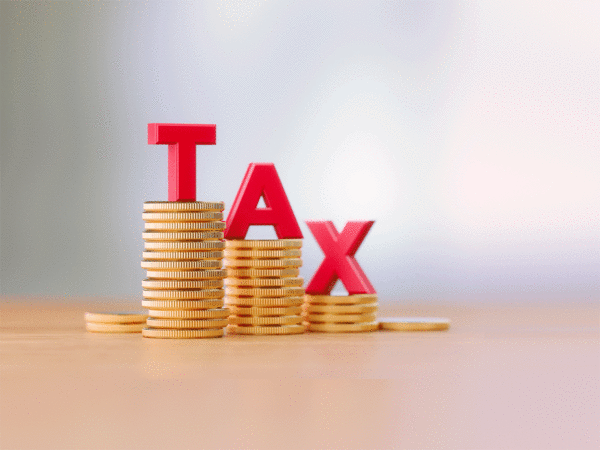![]()
The Centre introduced the New Tax Regime under Section 115BAC as a new optional alternative to the Old Tax Regime from April 1, 2020 (FY 2020-21) for individuals and the Hindu undivided family (HUF). But after three years, Union Finance Minister Nirmala Sitharaman during the Union Budget 2023 announced that the New Tax Regime will be the default tax regime for taxpayers who do not choose their preference at the beginning of the fiscal year.
The New Tax Regime was introduced with the altered tax slabs and concessional tax rates. It is applicable to all taxpayers, including individuals, Hindu Undivided Families (HUFs), and Association of Persons (AOPs).
In her Budget speech for 2023-24, Union Finance Minister Nirmala Sitharaman said budget proposals under the new income tax regime will leave more money in the hands of the people and it is up to the taxpayer to decide where to put his money, rather than the government incentivizing or disincentivizing him to do so.
However, the government clarified that those who will opt for the New Tax Regime cannot claim several exemptions and deductions, such as HRA, LTA, 80C, 80D and more, which are earmarked only for the Old Tax Regime.
In Budget 2023, FM Sitharaman introduced 5 key changes to encourage taxpayers to adopt the new regime. It is to be noted that salaried individuals can claim two deductions under the new tax regime — Standard Deduction and deduction under section 80CCD (2) for employer’s contribution to NPS.
Here are the latest changes in the New Tax Regime:
1. Standard Deduction and Family Pension Deduction
In the case of salary income, the Standard Deduction of Rs 50,000, which was previously only available under the Old Tax Regime, was extended to the new tax regime. Under the New Tax Regime, you can enjoy a tax-free income of Rs 7.5 lakhs, which is after you apply the standard deduction and tax rebate.
Family pensioners can also benefit from this deduction. They can claim either Rs 15,000 or 1/3rd (33.33 per cent) of their pension, whichever is lower.
It is to be noted that the benefit of the Standard Deduction will be allowed to pensioners only if the pension is taxable as salary income. If someone chooses the pension as income from the other source, then the benefit of the Standard Deduction will not be applicable.
Documents required for standard deduction
No supporting documents are required to claim the Standard Deduction. But to file the IT return of a salaried individual, the following documents are required.
> Bank statements of the previous fiscal year.
> Income statements from interest or fixed deposits.
> TDS (Tax Deducted at Source) certificates.
> Investment documents.
> Form 26AS and Form 1040.
2. Deduction under Section 80CCD(2)
Section 80CCD(2) applies to only salaried individuals and not to self-employed individuals. The deductions under this section can be availed over and above those of Section 80CCD(1).
Section 80CCD(2) allows a salaried individual to claim the following deduction:
Central Government or State Government Employer: Up to 14 per cent of their salary (basic + DA)
Any other employer: Maximum deduction of 10 per cent of salary (basic + DA)
Under the updated tax regulations, individuals can avail the advantage of employer contributions to their National Pension System (NPS) account as per Section 80CCD(2) of the Income Tax Act. This deduction is limited to the employer’s NPS contributions made on behalf of the employee, up to 10 per cent of the employee’s salary (Basic + DA).
The new tax regime also offers exemptions for voluntary retirement, gratuity, and leave encashment.
3. New Tax Regime Exemption List
> Transport Allowances w.r.t. Person with Disabilities (PwD)
> Conveyance Allowance
> Travel/ Tour/ Transfer Compensation
> Perquisites for Official Purposes
> Exemptions for Voluntary Retirement Scheme u/ Section 10(10C)
> Gratuity Amount u/ Section 10(10)
> Leave Encashment u/ Section 10(10AA)
> Interest on Home Loan on Lent-out Property u/ Section 24
> Gifts of Up to Rs. 5,000
> Employer’s Contributions to Employees NPS Accounts u/ Section 80CCD(2)
> Additional Employee Costs u/ Section 80JJA
> Deductions on Deposits in Agniveer Corpus Fund u/ Section 80CCH(2)
How useful was this post?
- Share review with rating here: Google Review
We are providing practical training (Labor Laws, Payroll, Salary Structure, PF-ESI Challan) and Labor Codes, Payroll Consultant Service & more:
- HR Generalist Practical Training + Certificate
- Labor Law + Payroll Practical Training + Certificate
- HR Analytics Practical Training + Certificate
- Labor Code, 2020 (Crash Course) + Certificate
- Advance Excel Practical Training + Certificate
- Disciplinary Proceeding & Domestic Enquiry – Practical Training + Certificate
- PoSH Act, 2013 (Sexual Harassment Of Women At Workplace & Vishaka Guidelines) – Practical Training + Certificate
- Compensation & Benefits – Practical Training + Certificate
- Industrial Relations – Practical Training + Certificate
- Labour Code (2019 & 2020) With Latest Updates | Labour Bill (Labour-Law-Practical-Training)
- PF – ESI Consultant Service
- Labor Law Consultant | Compliance Management | HR & Payroll Outsourcing
Get Latest HR, IR, Labor Law Updates, Case Studies & Regular Updates: (Join us on Social Media)
- Telegram Channel: The One Clik
- Whatsapp Group: https://wa.me/919033016939
- Facebook: The One Clik
- Linkedin: The One Clik
- Instagram: The One Clik
- YouTube: The One Clik
Disclaimer: All the information on this website/blog/post is published in good faith, fair use & for general informational purposes only and is not intended to constitute legal advice.

